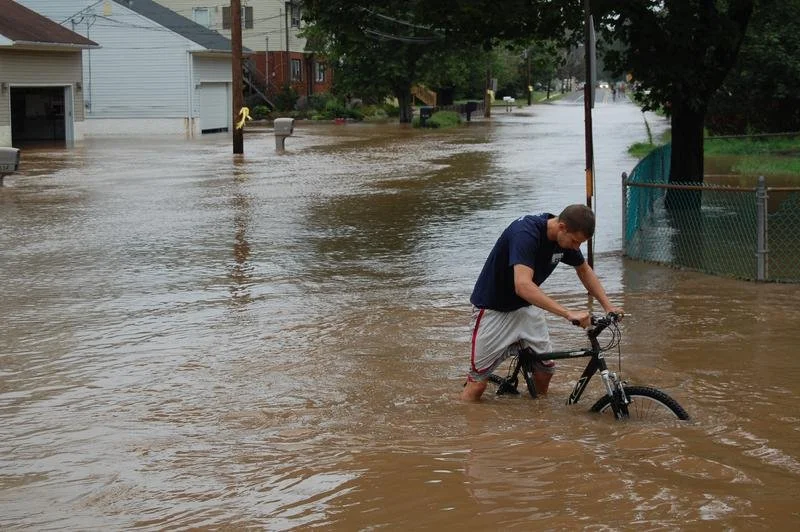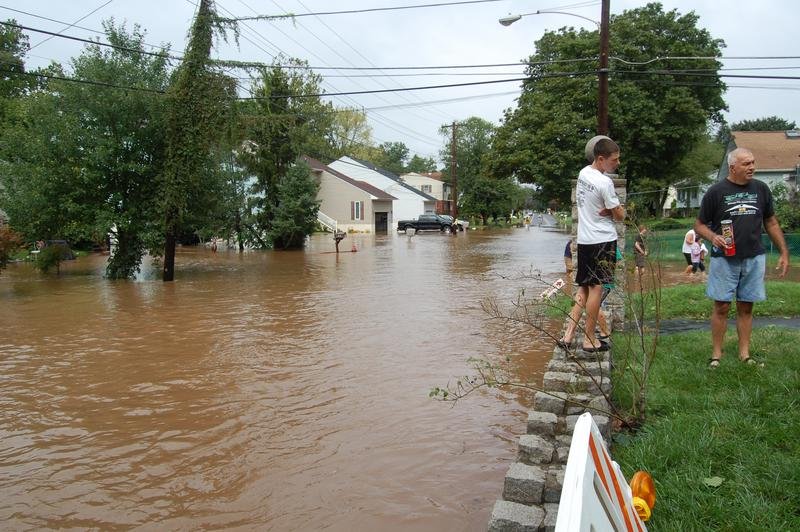
Conservation is our Goal
Historic Flooding In Our Town
When Hurricane Ida hit in September 2021, Hulmeville was inundated with water. Over the span of 12 hours, 2 to 4 inches of rain fell causing the Neshaminy Creek to rise close to 19 feet at the storm’s peak. This flooded many residents homes and left Main St. underwater, rendering it impassible for residents and emergency vehicles. While Hulmeville is no stranger to flooding along the Neshaminy, Ida caused it to rise to levels never seen before, causing extensive damages to many residents homes.
With large storms like Ida happening more frequently, we’re concerned this large development plan would further increase runoff and risk of flooding. Hulmeville’s Storm Water Management provides support and education for residents to mitigate the effects of storm water and flooding damages, but construction of this development would only increase the amount of 'impermeable surfaces’, leading to more runoff. It would also destroy the natural lands that serve as a key buffer from storms and further increase groundwater and pollution running to the borough and creek.
Below are some images from residents
of the flooding caused by Hurricane Ida
A Haven for humans and animals alike
This piece of land has played a pivotal role not only for the residents of Hulmeville but also the natural critters that have called it home
Rapid development has all but vanished the pastoral forests that once gave Pennsylvania it’s namesake. The meadows and deciduous forests on the property provide one of the last shelters for numerous plant, wildlife as well as fungal species along the Neshaminy Creek. In 2009 this land was recognized as a Natural Heritage Area before the previous owners let the registration lapse.
Developing this land would mean destroying Hulmeville’s natural resources on one of the largest parcels of natural land in the borough. We’d love to continue to see our furry and winged friends survive and thrive in Hulmeville and continue to have them as our neighbors!

Here are just a few creatures that call Hulmeville Home
-
Eastern Bluebird
A long-time resident of Pennsylvania, Bluebirds are part of the Thrush family, known for their complex songs and open-style nests in low trees and shrubs. They can be found across the state in orchards, forest clearings, farmlands, and gardens and parks hunting insects, later native fruits in the fall and winter. As their name implies, Bluebirds have a dazzling blue coloration on their back and wings with a bright orange chest.
Unfortunately over the past 200-years, Bluebird populations have decreased significantly, due to a combination of competing for nesting space with other invasive bird species, as well as the heavy-use of DDT and other related pesticides in the early 20th century. Their populations have stabilized somewhat, however the rapid disappearance of open-space and forested lands have left the Bluebird to search for greener pastrues.

-
Monarch Butterfly
Monarch Butterfly populations have been steadily decreasing in recent decades. While overwintering monarch population decrease has been slower, the migratory sub-species that undergoes the famed thousand-mile journey from Mexico to locations in the US/Canada has been added to the IUCN’s (International Union for Conservation of Nature) Red List of endangered species.
The hill is home to milkweed, a native perennial that plays a crucial role as shelter and a food source for Monarchs early in their life cycles. Monarchs are exceptional polinators, and help to keep your flowers coming back every year!

-
Red Foxes
Our mascot and our neighbor, Sugar, pictured here! While common, Red Foxes are a protected species in Pennsylvania. Red foxes prefer rolling hills, meadows and marshes, compared to the Gray Foxes’ mountains, another PA native species. Foxes are generally nocturnal, preferring to do all the hunting at night but can be seen in the late evening/early morning like our friend here! In the winter you can sometimes find them napping in open fields, curled up into tight balls to stay warm.
Red Foxes play an important role in the food chain by controlling rodent populations and other small mammals. While other species such as predatory birds and owls hunt rodents, foxes help keep their numbers low so they don’t cozy up in your home or gardens. Red Foxes require an area of up to 5 miles to comfortably live and hunt. Demolishing our hill would further push our friend here into our backyards and into harms way.
What this proposal means
Destruction of Habitat
Forests and meadows are complex ecosystems that require years to achieve balance, requiring a relationship between trees and shrubs, fungi, predators and scavengers. To return Hulmeville’s natural environment to it’s current health would take many further years assuming construction is conducted with environmental impact in mind.
Limited Grazing
Open meadows are important source of food for all wildlife. Native wild flowers provide an sustinance for pollinators and insects, while many bird species need these insects to feed as well. Without this important meadow space on our hill, it could impact future generations of wildlife to come in Hulmeville.
Deer Involved Incidents
Deer populations have been increasing state-wide, but also here in Bucks County for which we receive our namesake. Destroying this natural environment would push the roaming deer population into our roads and highways, further increasing the risk of potentially deadly collisions.
More Pollution
More residents will mean more cars on the road to Hulmeville, further increasing congestion and reducing air quality in the borough. This includes the runoff as well as construction waste that’s harmful to the environment and typically left behind.

Without the historic buildings that remain and the equally important natural lands that surround us, we wouldn't quite be the thriving town that we are.
The HCC is committed to keeping it this way for generations to come
Sign up to hear about upcoming events & meetings!
See new updates on our social media!










